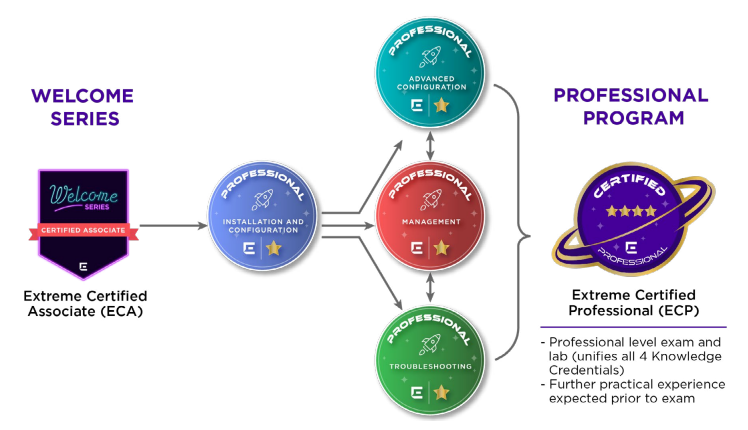Extreme Campus Fabric - Troubleshooting
Extreme Networks’ Fabric Connect is an advanced, reliable, high performance network solution. This training course will review the technologies that support the fabric operation and services highlighting their proper operation and ways to determine misconfiguration. Identifying problems at network Layer 1, Layer 2 and Layer 3 and discussed along with how to troubleshoot fabric service issues. Lectures are supported equally with hands-on troubleshooting activities.
Description
VSP Tools
• Switch Boot and Images
• Switch Logs
• Key Health Indicators and Status Switch
Management and On-Boarding
• Segmented Management Config and Issues
• Fabric Management using GRT and CLIP
• Examining the Onboarding Process
Link Configuration and Issues
• Gigabit Ethernet Port Configuration
• Link Layer Discovery Protocol LLDP
Fabric Connect IS-IS/SPBM Infrastructure
• IS-IS and SPBM Configuration Issues
• Virtual Link Aggregation Control Protocol VLACP
• VIST Core Switch Pair Config and Issues
Fabric Services Troubleshooting
• Layer 2 VSN Config and Issues
• IP-Shortcuts Config and Issues
• Layer 3 VSN Config and Issues
• InterVSN Routing Config and Issues
• IP Multicast Config and Issues
WHO SHOULD ATTEND
This course is designed network administrators, support engineers and integrators responsible for the management and troubleshooting of the Extreme Networks Campus Fabric Connect switches and devices.
Prerequisites
To take part and to gain the most benefit from this training, you must possess the full learning credential in Extreme Fabric - Installation and Configuration.
This requires completion of the training and having successfully passed the related exam.
